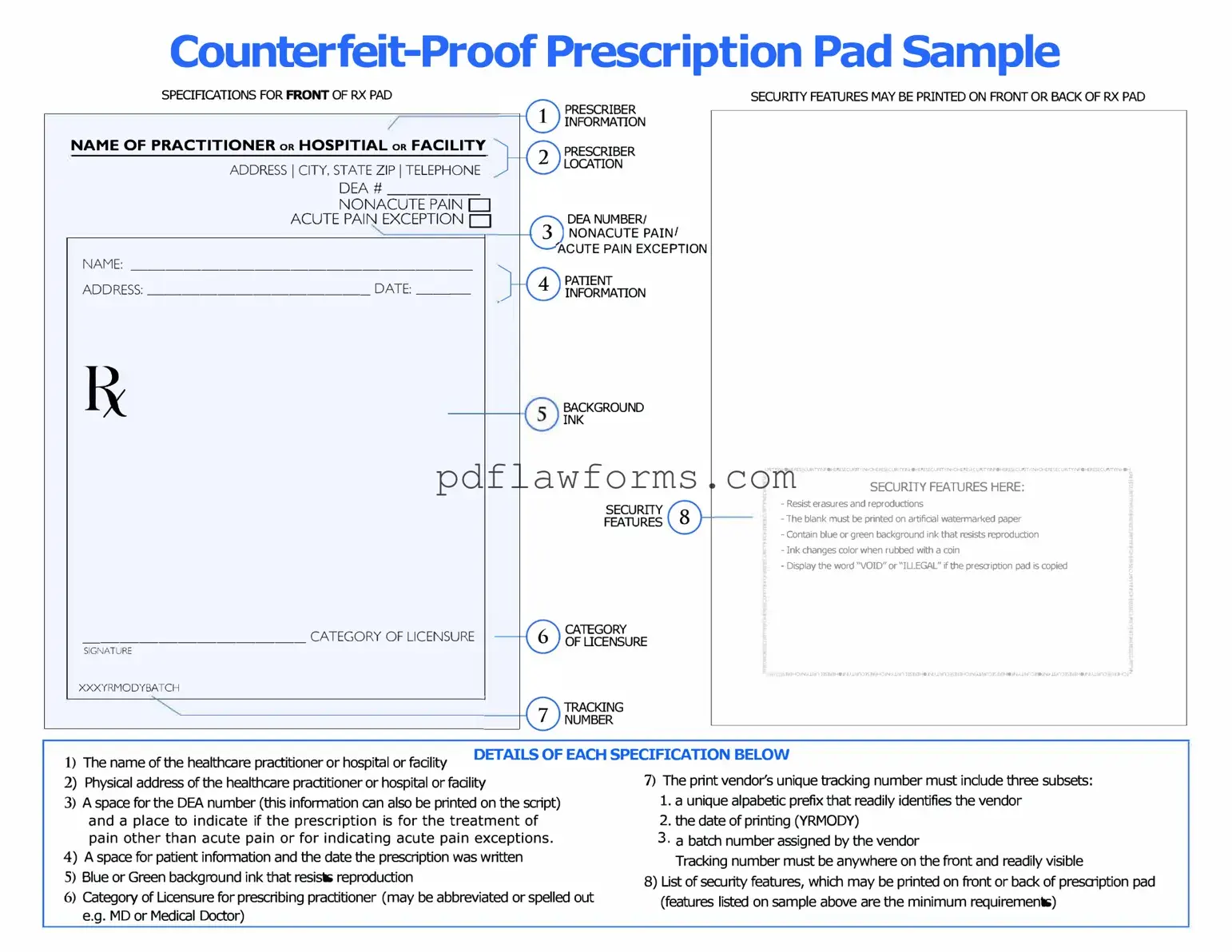The Prescription Pad form is an essential tool in the healthcare industry, streamlining the process of prescribing medication to patients. This form typically includes vital information such as the patient's name, date of birth, and contact details, ensuring that prescriptions are accurately attributed. Additionally, it features sections for the prescribing physician's information, including their name, contact number, and medical license number, which helps maintain accountability and professionalism. The form also outlines the specific medication being prescribed, including dosage, frequency, and any special instructions, all of which are crucial for patient safety and effective treatment. Furthermore, the Prescription Pad may include fields for the prescribing date and the number of refills authorized, allowing pharmacists to efficiently manage the dispensing process. By incorporating these elements, the Prescription Pad form plays a critical role in promoting effective communication between healthcare providers and patients, ultimately contributing to better health outcomes.
